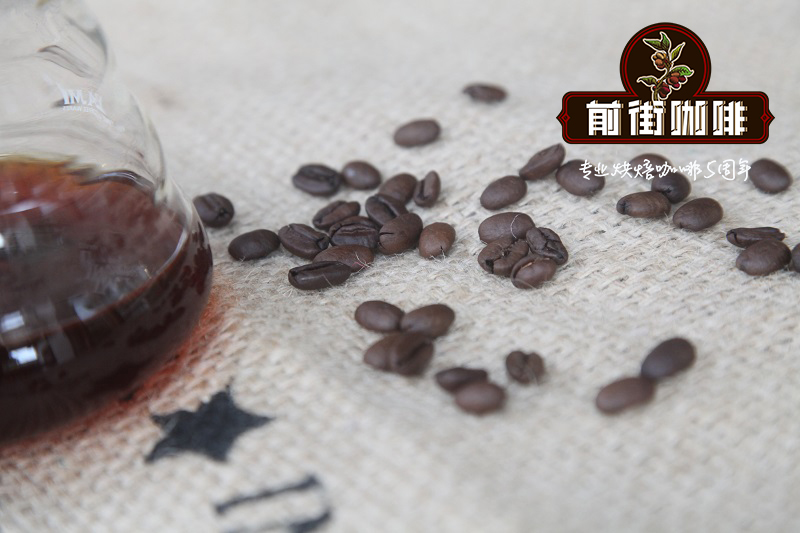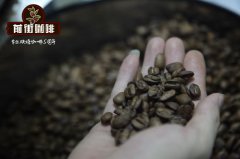Did Burundian coffee make boutique coffee from the beginning? What do Burundian coffee and Cameroon coffee have?

Professional coffee knowledge exchange more coffee bean information please follow the coffee workshop (Wechat official account cafe_style)
Burundi
Fragrant, soft-tasting coffee from war-torn areas
Burundi has the most diverse and successful coffee industry in the world, and has its own characteristics. Coffee in this country was introduced by Belgian colonists in 1930 and is now grown only on small farms. Unfortunately, many of these farms are on the border with war-torn Rwanda, putting pressure on coffee production. Almost all coffee produced in Burundi is Arabian coffee beans, while coffee trees in Ngozi are planted at an altitude of more than 1200 meters. Burundian coffee has a rich aroma and excellent acidity, and most of its products are exported to the United States, Germany, Finland and Japan.
Burundian coffee originated in the Belgian colonial period in the 1920s. Since 1933, each farmer has been required to take care of at least 50 coffee trees. When Burundi became independent in 1962, coffee production began to go private. In 1972, it became state-run with the change of political situation, and gradually returned to private hands in 1991.
The cultivation of coffee trees has grown steadily in Burundi, but production fell sharply as a result of the civil war in 1993. Since then, Burundi has been committed to increasing the production and value of coffee. Investment in the coffee industry is seen as a top priority because Burundi's economy is on the brink of collapse as a result of a long civil war. In the global ranking of per capita national income in 2011, Burundi ranks among the lowest in the world. 90% of its national income is supported by agriculture, and total exports of coffee and tea account for 90% of foreign exchange earnings.
The geographical environment of Burundi is very suitable for coffee cultivation. The territory is mountainous, with suitable altitude and climate. There are no coffee farms in the country and Burundian coffee beans are mainly produced by a large number of small farmers. In recent years, these small producers have become more and more capable of organizing. Most of them will gather around the 160 wet treatment plants in the country, 2/3 of which are state-owned and the rest are privately owned. On average, each wet treatment plant handles coffee beans from hundreds to up to 2, 000 producers.
Wet treatment plants in different production areas will also form their own management integration unit-SOGESTAL Wet treatment Plant Management Association. The main function of the association is to provide better hardware equipment in the region, so it has contributed to the improvement of coffee quality in Burundi this year. The best coffee in Burundi is washed, mostly bourbon, but there are other varieties. There are many similarities between Burundi and Rwanda. Except for similar elevations and coffee varieties, both countries are landlocked, which can be hindered by the rapid export of raw coffee beans to consumer countries at their best. Like Rwanda, Burundian coffee is prone to defects-potato flavor.
Until recent years, every wet treatment plant under SOGESTAL has mixed raw beans. Many coffees from Burundi can only be traced up to their respective SOGESTAL, that is, their areas of origin.
Since 2008, Burundi has begun to transform towards a boutique coffee industry, leading to the emergence of many procurement methods such as direct trade and traceability of origin. In 2011, Burundi hosted the prestige Cup (Prestige Cup) Coffee Raw Bean quality Competition, which was also a pilot competition before the official holding of the larger COE,Cup of Excellence Cup. Coffee beans from various wet processing plants are stored separately, ranked according to quality, and then sold at auction, all with production and marketing experience. This also means that unique high-quality coffee beans from Burundi will gradually appear on the market, which will be of great help to the improvement of quality.
Burundi, with a population of about 9 million, produced 167000 bags (60kg/ bags) in 2013. Burundi is a small country and there is no clear scope of production areas. Coffee trees can be planted all over the country as long as the geographical environment and location are suitable. The country is divided into different provinces, and coffee gardens gather around wet treatment plants.
-- main producing areas:
1. Ngozi NGOZI
The most intensive area of coffee production is in northern Burundi, where 25% of the country's wet treatment plants are located.
Altitude: average 1650 m
Harvest time: April-July
Varieties: bourbon, Jackson, Mibrizi and some SL system varieties
2. Cayanza KATANZA
Located in the north, adjacent to Rwanda, it has the second highest density of wet treatment plants in the country.
Altitude: average 1700 m
Harvest: April-July
Varieties: bourbon, Jackson, Mibrizi and some SL system varieties
Gitega GITEGA
The production area, located in central Burundi, is also home to two state-run dry treatment plants. The main task of the processing plant is to carry out final treatment and quality management for recreation.
Altitude: average 1450
Harvest time: April-July
Varieties: bourbon, Jackson, Mibrizi and some SL system varieties

Cameroon
Deep-roasted coffee beans suitable for espresso
The cultivation of Arabica coffee trees in Cameroon (Cameroon) began in 1913 as the Blue Mountain Coffee from Jamaica, but the country also produces large quantities of Robbins coffee. The quality and characteristics of Cameroon coffee is similar to that of coffee from South America. The best coffee in the country comes from Bamileke and Bamoun in the northwest. Here, it also grows some giant coffee beans and bean-shaped berry coffee.
Since the late 1980s, coffee production in Cameroon has declined, from 1.8 million bags in 1987 to 1.1 million bags in 1990, while Arabica coffee has dropped from 400000 bags to 200000 bags in the same period. Now, due to the strengthened management of the National Coffee Supervision Bureau (National Coffee Supervisory Agency), the output and quality of coffee may pick up.
Important Notice :
前街咖啡 FrontStreet Coffee has moved to new addredd:
FrontStreet Coffee Address: 315,Donghua East Road,GuangZhou
Tel:020 38364473
- Prev

Where can I buy fresh roasted coffee beans? is there any fresh coffee beans on Taobao? fresh coffee beans brand recommendation
Professional coffee knowledge exchange more coffee bean information please pay attention to the coffee workshop (Wechat official account cafe_style) in online shopping to buy good coffee beans absolutely need certain skills, friends and editors to practice a pair of fiery eyes gold. What is the relationship between coffee bean oil and freshness? Should we buy fresh coffee beans with or without oil on the outside? Choose coffee
- Next

How to choose fresh coffee beans? How much is freshly roasted coffee beans? which brand of fresh coffee beans is better?
Professional coffee knowledge exchange more coffee bean information please follow the coffee workshop (Wechat official account cafe_style) if you are buying individual coffee beans, then you should grab a handful of beans with your hand, about 10 pieces of weight, to see whether the color of each coffee bean is the same, whether the particle size is average, whether the shape is the same, so as to avoid buying shoddy products disguised as mixed beans. But if it's comprehensive,
Related
- Detailed explanation of Jadeite planting Land in Panamanian Jadeite Manor introduction to the grading system of Jadeite competitive bidding, Red bid, Green bid and Rose Summer
- Story of Coffee planting in Brenka region of Costa Rica Stonehenge Manor anaerobic heavy honey treatment of flavor mouth
- What's on the barrel of Blue Mountain Coffee beans?
- Can American coffee also pull flowers? How to use hot American style to pull out a good-looking pattern?
- Can you make a cold extract with coffee beans? What is the right proportion for cold-extracted coffee formula?
- Indonesian PWN Gold Mandrine Coffee Origin Features Flavor How to Chong? Mandolin coffee is American.
- A brief introduction to the flavor characteristics of Brazilian yellow bourbon coffee beans
- What is the effect of different water quality on the flavor of cold-extracted coffee? What kind of water is best for brewing coffee?
- Why do you think of Rose Summer whenever you mention Panamanian coffee?
- Introduction to the characteristics of authentic blue mountain coffee bean producing areas? What is the CIB Coffee Authority in Jamaica?

